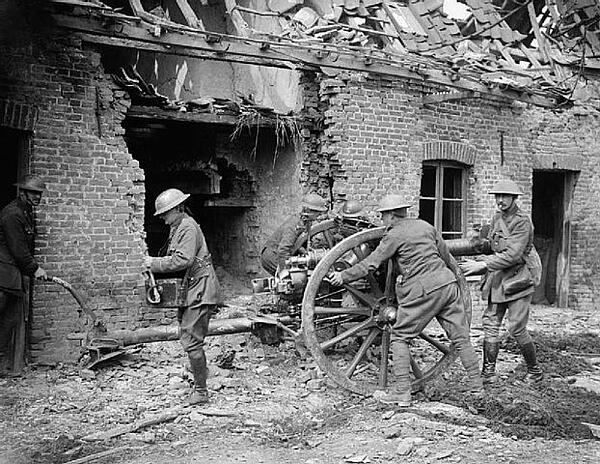The Battle of Lys
The Battle of Lys was part of the 1918 German Spring Offensive, which was ordered by Luderndorff as a final attempt by the Germans to break through Allied lines that engulfed Ypres. The Battle of Lys is known by many names, including the Fourth Battle of Ypres, the Lys Offensive and the Third Battle of Flanders.
By the spring of 1918, the Germans were aware that they had a serious issue to contend with on the Western Front, where the Allied were holding strong. American soldiers had also arrived in Europe in large numbers following the American declaration of war, and the German High Command knew American troop numbers would only continue to rise. The Spring Offensive was the final attempt by the German commanders to defeat the Allies before America took command of the war.
The aim of the Battle of Lys was to capture Ypres and the surrounding high ground of Messines Ridge. Their plan was to exploit the River Lys, which split the Allied armies. - the First Army commanded by General Horne and the Second Army commanded by General Plumer. They would attack the First Army first and then move northwest.

The attack began on 9th April 1918 following a two-day artillery barrage. The German Sixth Army began their attack near Nueve Chapelle, where they came across 20,000 Portuguese soldiers from the 2nd Portuguese Division, who were commanded by future President of Portugal, General Comes da Costa. Facing 50,000 German troops, the Portuguese troops were lacking in manpower and equipment and quickly retreated, suffering 7,000 casualties in the process. This spurred on the Germans as they continued to advance towards the British.
General Horne was first to pull back to cover the gap created by the Portuguese withdrawal but the British 55th Division based in the south managed to halt the Germans. The Australian 1st Division also managed to halt the Germans when they made an attempt on 12th April to capture Hazebrouk - a major Allied logistics centre - which would have been a huge blow to the Allies.
Despite these failures for the Germans, their advance was so strong that Field Marshal Haig called on General-in-Chief of the Allied Forces, Marshal Foch, to send reinforcements. Foch was initially unwilling but on 14th April he sent troops to aid the Allied front lines. In spite of this, Haig felt that the Allied positions had been stretched and he issued his famous “back to the walls” order:
“With our backs to the wall, and believing in the justice of our cause, each of us must fight on to the end.”
The arrival of reinforcements eased the Allied situation, and while the Germans continued to advance and take key targets - including Mount Kemmel and Scherpernberg - their attack had started to sloe by 29th April.
Luderndorff called a halt to the attack and the gains made at the Battle of Lys were the last the Germans were to make in World War One. The battle had cost them greatly - something they could not afford with the Americans making their way to Europe - and in total they lost 120,000 men. While the initial gains had boosted the German High Command, these losses were not sustainable. Not long afterwards, the war came to an end.
MLA Citation/Reference
"The Battle of Lys". HistoryLearning.com. 2024. Web.
